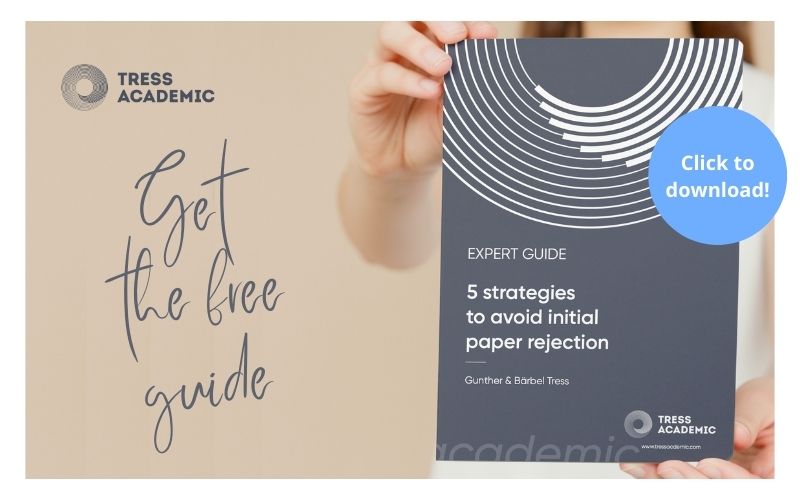Have you been asked to review a paper for a journal? Or have your colleagues asked you for a friendly review of their manuscript? In both cases, you want to deliver a thoughtful review report that is helpful and constructive. In this post, you’ll learn the key characteristics of such a review report.
Reviewing papers can be a tedious duty. It takes time and energy that reviewers would rather spend on their own work. But reviewing is also a privilege and a responsibility. It is an essential part of the academic quality-control of research made accessible to peers. We need reviewers to help get better papers published.
Receiving review reports is usually not the fun part of the paper-publishing exercise either. As the author of a paper in peer-review, you’ve been waiting for weeks to get reviewer feedback on your paper, and when you finally receive it, it can include harsh criticism, comments that are hard to understand, or even suggestions that you should start your research all over again.
It is common that a reviewer complains about the quality of an author’s manuscript, but it is also common for the author to feel the reviewer is unqualified to judge the paper properly. Yet, both sides are acting with good intentions, and want to deliver high-quality work. It is sometimes difficult to read good intentions out of a review report. So it all comes down to the quality of the review report that the reviewer produces and the author receives.
From the reviewer’s perspective, a good review report addresses the key problems of a paper and gives clear direction to the journal what to do with this paper. From the author’s perspective, a good review report is probably one that does not criticise the paper too much and suggests acceptance sooner rather than later.
A good review report probably does both: It addresses potential weaknesses of a paper, but in a way that opens up a direction to realistically improve the paper up to publishing standards. To create such a review report requires that you consider the eight characteristics that make your review report a good one, which we have detailed below and summarised in a Checklist of Good Review Reports.
A good review report is …
1. Fair
Most of all, a review report should be fair. It should consider the context and the framework of the research presented in the paper. It requires the reviewer to have the qualifications needed to judge the paper topic accurately. It also requires the reviewer to be genuinely interested in the paper topic to realistically see what this paper can add to its field. The review report should be written on equal terms, and should not consider the standing or experience of the author. If you’re asked to review a paper but feel that you’re not qualified and interested enough in the paper, you will have difficulties providing a good review report, and should consider declining the review request.
2. Timely
A review report should be delivered in a timely manner. Don’t delay it from your side as a reviewer. The authors might have submitted the paper to the journal weeks ago. Accept the review invitation only when you know you can deliver it in the given time. If the journal doesn’t provide a deadline, return your report within 2-3 weeks, if possible.
3. Constructive
A reviewer is not asked to write a damning review of the paper listing all the negative aspects that could be found. Reviewing is not about showing the journal’s editor how many mistakes you can find as an indicator of your own qualification. The journal wants to see you provide helpful advice to the authors about what they can do to improve the paper. If the journal would have considered the paper of so low quality that it needs to get rejected right away, they would have declined it upfront and not bothered sending it on.

4. Direct
A good review report points out a potential outcome for the paper. In your opinion, will this paper make it to publication? What are the essential changes or improvements that the authors need to implement to get there? Coming up with a long list of comments on each and every detail in a paper is certainly an expression of careful reading, but the authors and the journals need to know in which direction you see this paper going. Tell them explicitly.
5. Positive
A good review report does not only point out weaknesses, but also highlights the good aspects of a manuscript. Every paper that you’ll see as a reviewer has some good aspects—otherwise the editors would not have sent it to you. Don’t ignore these positive aspects, and try to show the authors that you have identified the merits of their paper, even if you think there are more weaknesses than strengths. Reviewers too easily fall into the habit of only picking at problems and mistakes in papers. Show that you’re different and feature valuable aspects of the paper that the authors can probably even expand on.

6. Reasonable
A good review report is reasonable in what it asks the authors to change. Of course, a reviewer might identify many problems and questions when reading a paper, but does this mean that the authors need to address all of them to get accepted? Be realistic in what the authors can achieve in a revision. If your suggestion would mean they have to spend another year doing research before they can address your concern, it is not a helpful suggestion. Of course, it might be needed to give the paper enough credibility to get published, but if it cannot be done in a reasonable time-frame, consider changing the direction you suggest the journal editor go with this paper.
7. Focussed
As a reviewer, you’re not asked to point at every single mistake and problem in the paper that you can find. If your review report stretches over half of the word count of the paper itself, it is probably getting too detailed. Reviewer comments can be divided into two categories: the first group includes suggestions the authors CAN and SHOULD address. The second group of comments include those that you think the authors HAVE TO address to get published. Focus on the key aspects that need to be fixed, and don’t get lost in the details that won’t substantially increase the quality of the paper.
8. Friendly
The way reviewers express their comments has a huge influence on how they are perceived by the authors. A good review report uses friendly and inclusive language. Show respect to the work and time the authors spent on the paper, even if you disagree with it. Your comments will be received better and are more likely to be addressed fully if you use a non-confrontational and non-patronising style. The authors are your peers, and they deserve to be treated the way you would like to be treated.
Conclusion
As authors, we value fair, friendly, and constructive judgements of our manuscripts. As reviewers, we shouldn’t forget that we—on other occasions—are authors as well. If you want to contribute to the quality-control process of published research in your field, make sure that the review reports that you produce for journals or others follow the characteristics described above. To help you, we created a Checklist of Good Review Reports that you can use whenever you’re reviewing the work of your colleagues.
Relevant resources:
- Checklist of Good Review Reports
- Blog post #9: What reviewers of your paper first look at
- Blog post #32: How NOT to react when you receive review reports
- Blog post #34: Seven features of a good response to reviewers
- Blog post #42: My paper got rejected! What now?
- On-demand course: How to review a paper
More information:
Do you want to successfully write and publish a journal paper? If so, please sign up to receive our free guides.
Photo by Andraz Lazic on unsplash.com.
© 2021 Tress Academic
#WritingPapers, #PaperWriting, #PeerReview #ReviewReport
